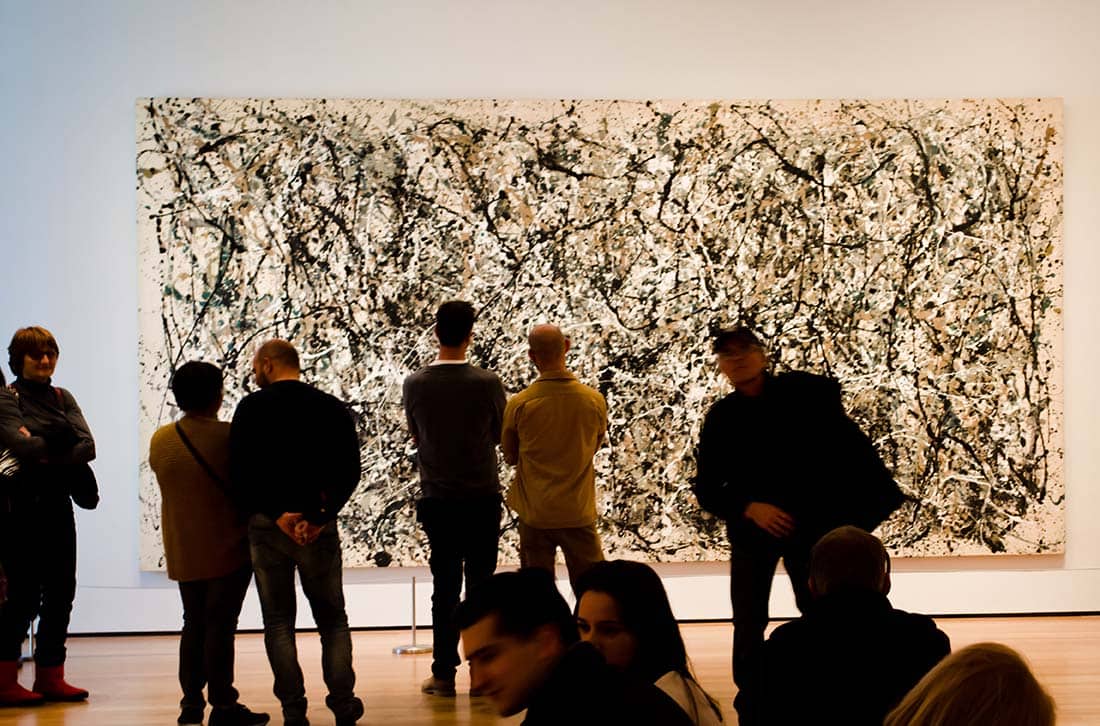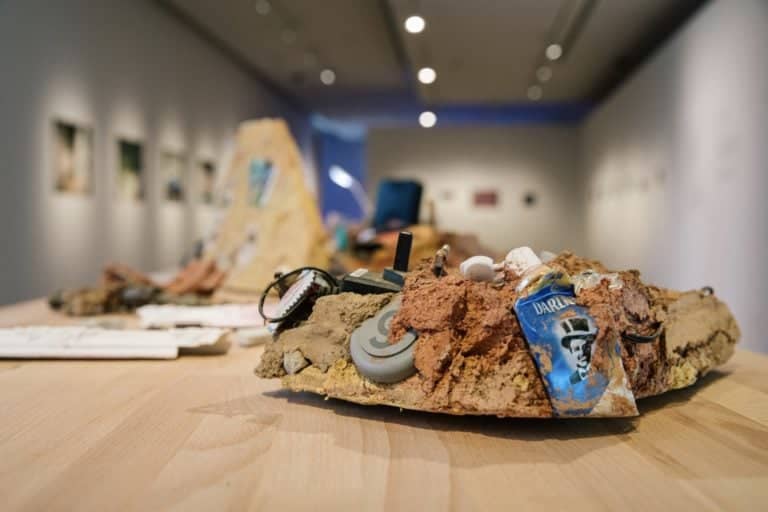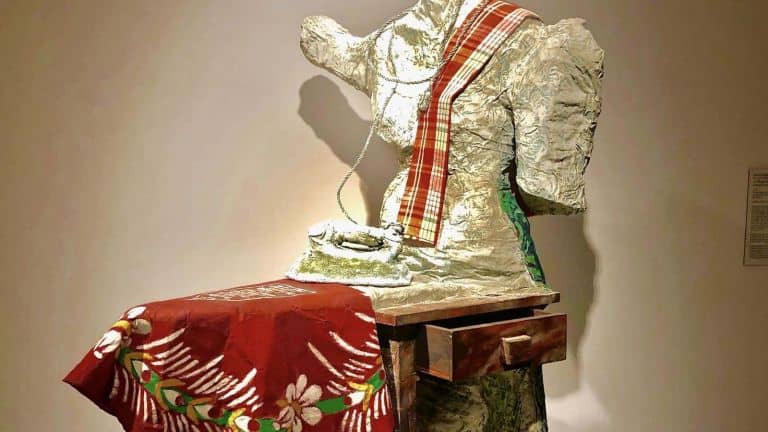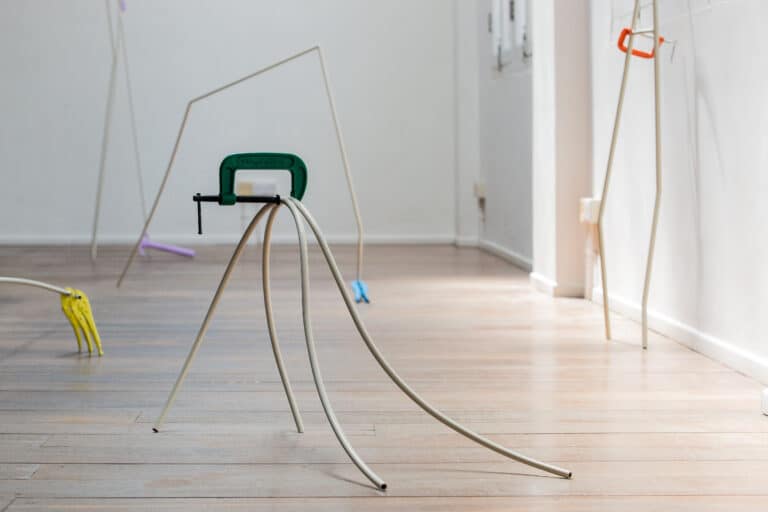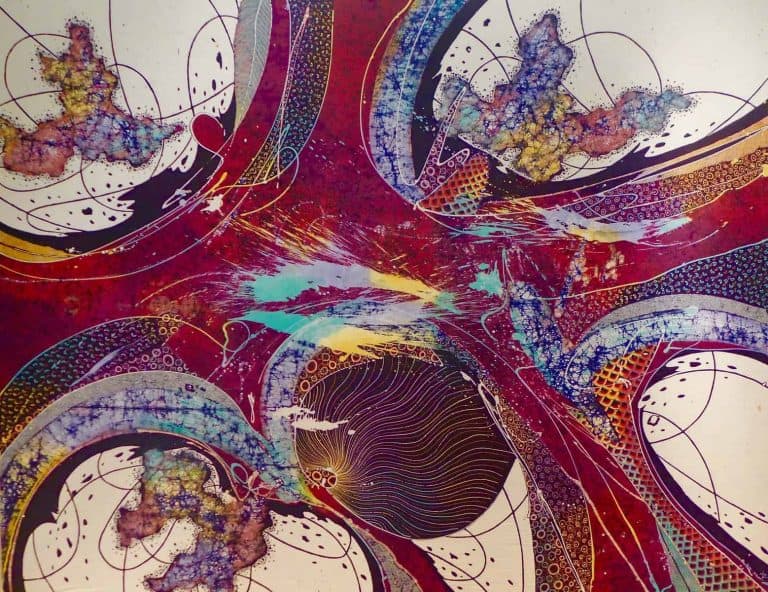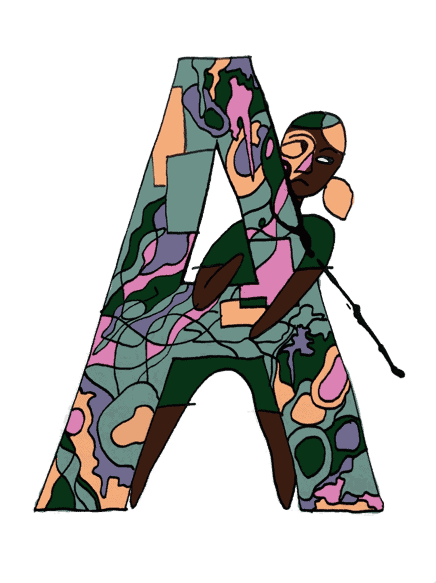
… is for Abstract Expressionism.
It’s an art movement that originated in the Western world, and in purely technical terms, has been generally described as a reaction to the aesthetics of master European Cubists such as Pablo Picasso, Fernand Leger and Georges Braque. However, it is important to note that there is no apparent consensus even in a Western context, on what the term definitively means. The term is often more commonly understood as referring to the post -World War II American movement which saw a group of artists (such as Willem de Kooning, Mark Rothko, Jackson Pollock (see featured image above), Hans Hofmann, Arshile Gorky and Barnett Newman, amongst others) producing non-representational work, that was motivated by inner expressions of emotion.
Asian modern and contemporary artists have too been described as applying this style of painting. For example, take a look at Balinese artist Made Sukadana’s 2008 painting Teringat Masa Lalu (Thinking of the Past):
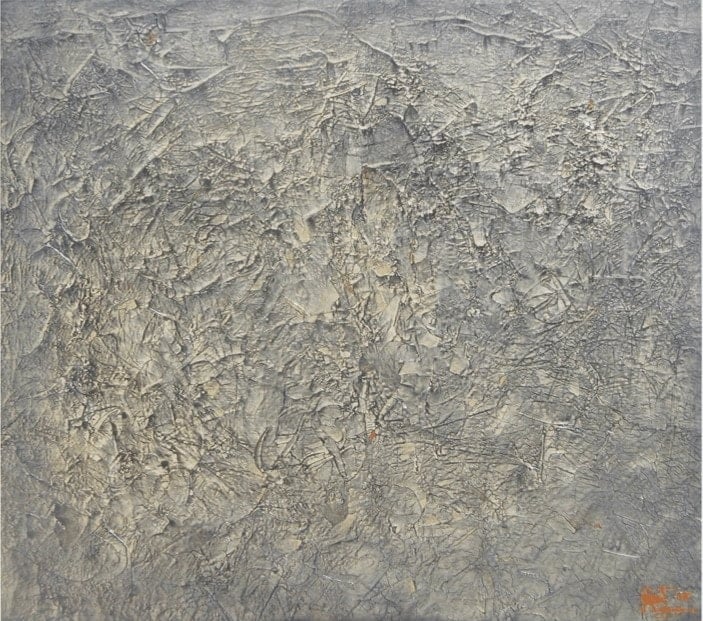
Physically, doesn’t it seem to resemble works executed in the style of abstract expressionism?
There are however difficulties with this categorisation, because Western abstract expressionism is a very specific concept. It doesn’t just refer to all kinds of paintings which look like squiggles on canvas. Generally, it tends to be non-representational. That is to say, it is not meant to be linked to the material or to trigger any associations with physical objects or events (i.e. the squiggles are often an end in themselves and wouldn’t represent say, a fruit basket, or landscape) . Also, abstract expressionism is often understood as relating to artists’ reactions to a particular time and space, unique to Western history (i.e. post World-War II conditions). It is therefore a continually debated question, as to whether such specific concepts, rooted in Western ideas and society, can ever be usefully applied in an Asian context. Are Asians simply blindly copying? Or do they bring a uniqueness to the concept that transforms it into something different altogether?
(Illustration of Letter ‘A’ by Nadra Ahmad)
